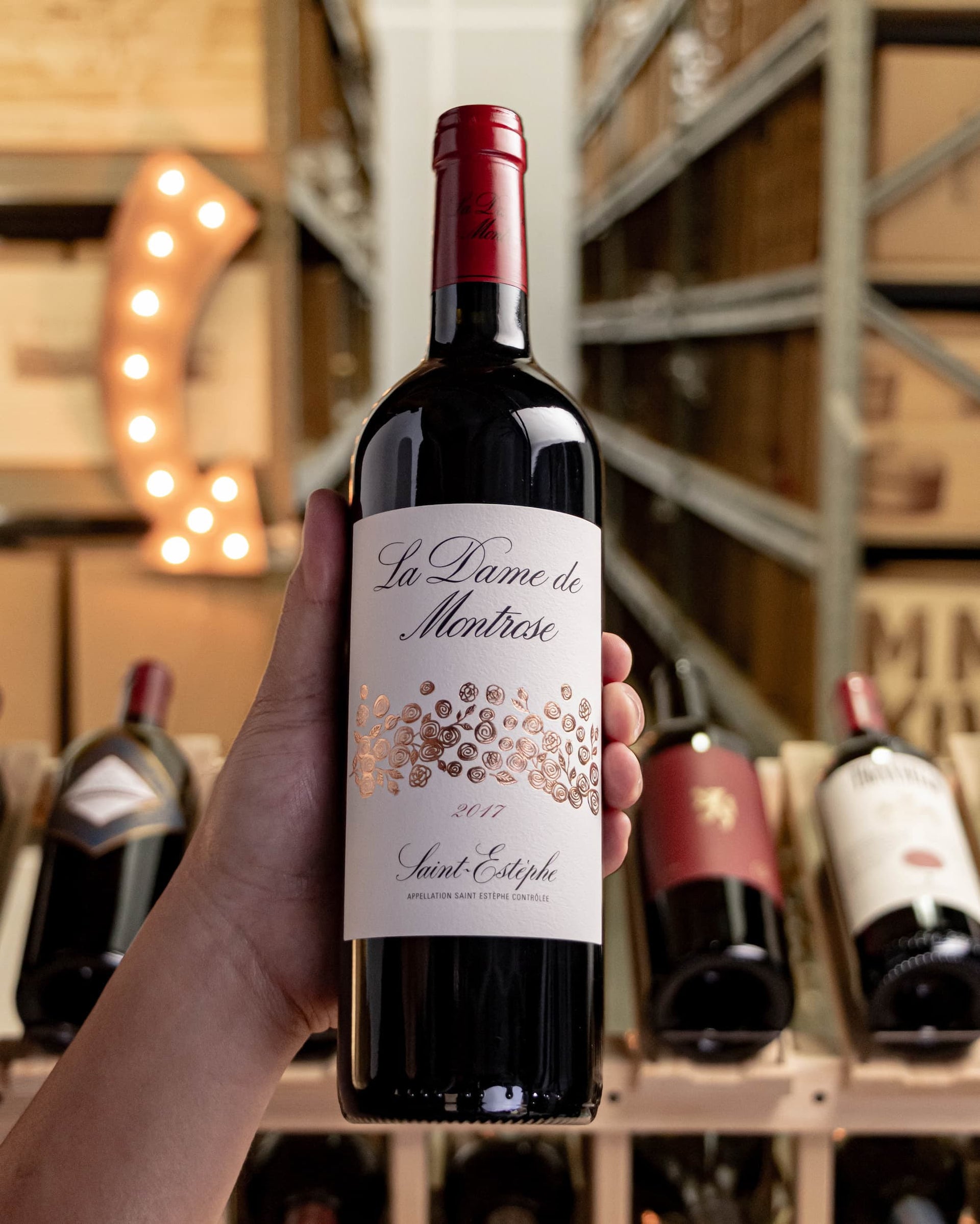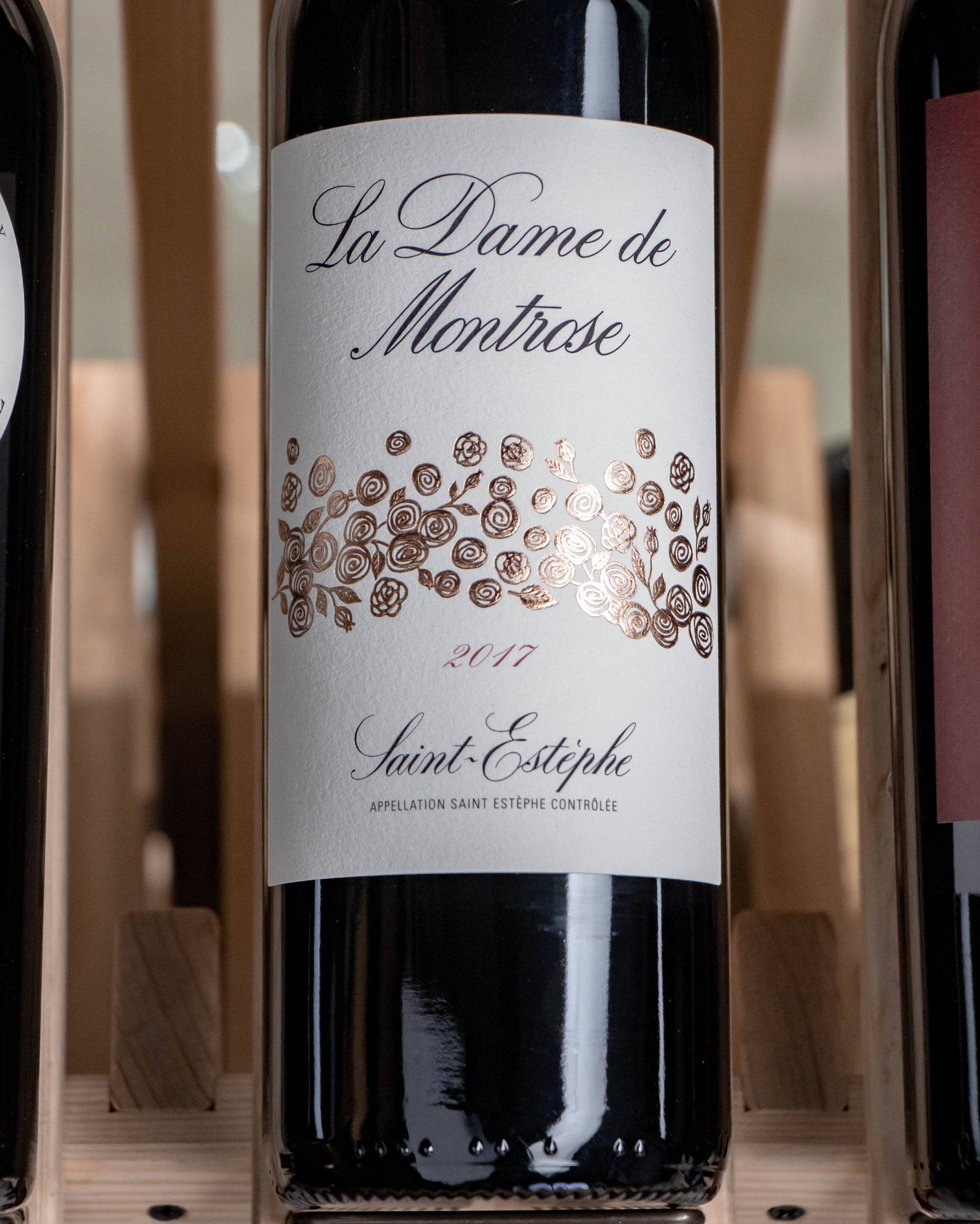Reviews
- James Suckling -
- Jeb Dunnuck -
- Robert Parker's Wine Advocate -
- Wine Enthusiast -
- Vinous -
Technical Details
- 49% Merlot, 43% Cabernet Sauvignon, 4% Cabernet Franc, and 4% Petit Verdot
- France
- Bordeaux
- Left Bank
- Saint-Estèphe
- 30% new French oak and 70% once-used French oak
- 12 months
- 13.5%
Château Montrose La Dame de Montrose Saint-Estèphe 2017
23% OFF RETAIL!
Château Montrose is a classic Saint-Estephe producer that has long been considered a supreme value for top-growth Bordeaux. 94 points for the second wine from this Second Growth shows its quality and pedigree... but under $50? That’s a stunning price for such a Bordeaux as this – but only 12 cases available! Grab yours ASAP!
Château Montrose was founded by Etienne Théodore Dumoulin, as he discovered a patch of forgotten heathland whilst exploring the family holdings following his father’s death. The land had been sold to the family by Nicolas Alexandre de Ségur – Bordeaux’s legendary “Prince of Vines” who had also served as owner to a few estates you may have heard of... namely, Château Lafite, Château Latour, Château Mouton, and Château Calon-Ségur. Etienne cleared the heather and planted the first vineyards, creating the Montrose estate in 1815. A mere 40 years later, Montrose was awarded Second Growth status in the 1855 Bordeaux Classification – a huge surprise among many of the long-standing great estates of the day. Two centuries of excellence have affirmed the selection, and Château Montrose remains one of Bordeaux’s greatest values.
Set in Saint-Estèphe along the Gironde estuary, in the northernmost commune of Bordeaux lies Château Montrose. The close proximity to the Atlantic, and the greater width of the Gironde at this point make for a cool yet moderated climate, with the vines flourishing on the rocky and gravelly alluvial soil deposits on this Left Bank site. The blend here is a rather classic 49% Merlot, 43% Cabernet Sauvignon, 4% Cabernet Franc, and 4% Petit Verdot, aged in 30% new and 70% once-used barrels for 12 months.
“It’s one of the top second wines out there and would easily pass for most estates’ top cuvee.” – Jeb Dunnuck
This wine pulses with a deep ruby color, followed by an intensely complex, perfumed, and elegant nose. The aromas of wild herbs, black cherry, and plum lead into flavors of black currant, black raspberry, dried flowers, and mulberries, with additional notes of dark chocolate, cedar, tobacco, graphite, and black licorice. The wine possesses a precise attack – where velvety tannins and a smooth, dense mid-palate are loaded with nuanced and expressive flavors, leading into a long and elegant finish that finishes with a flash of oak. This is a wine of pure class, extraordinary elegance, and admirable poise that is just entering the prime of its easily two-decade-long drinking window. If you’re looking for the newest addition to your cellar, or just an amazing bottle of wine to have at a special dinner – look no further!
PAIRING IDEAS: Something rich, hearty, and classy is in order – how about some braised short ribs with Yukon gold potato puree, rainbow chard, crispy roasted carrots, and black truffle jus?


